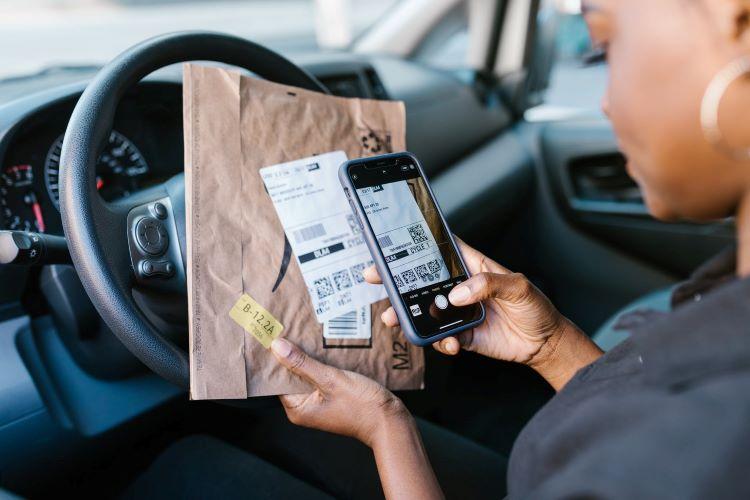Himanshu Verma, Chief Product and Technology Officer of Licious, divulges how the digital fresh meat and seafood seller is reimagining conventional operating models and driving stellar customer experiences by leveraging AI, ML, and Blockchain.

The majority of India’s fresh meat and seafood market is unorganized. The country’s growing meat population often gets perplexed and unsure if the meat they are eating is safe and hygienic for human consumption. The reason is that most of the meat in India gets sold in the open market. Unhygienic slaughterhouses have existed for many years through cross-contamination, improper storage, and transport conditions. In the traditional poultry and meat industry, quality checks may have been happening in some cases, but consumers had no idea about that, not that consumers do not care about it.
The universal health crisis has resulted in these concerns growing manifold, with demand for superior quality online meat has surged about 2.5-3X with immense opportunities ahead.
Bengaluru-based tech-enabled start-up Licious saw this as an exciting opportunity to address the above gaps by leveraging emerging technological solutions. The direct-to-consumer (D2C) fresh animal and protein brand, where farmers are straight linked to butchers and then to Licious, has been trying to address some of these gaps since its inception in 2015 and accelerated its growth harnessing data science, blockchain, and artificial intelligence (AI).
“Licious started with the vision to solve some of the pressing issues that the Indian meat industry had been facing. Access to great quality and hygienic meat has not been there in India. We asked: how can we organize this large market and deliver unparalleled meat-eating experience by following global quality standards and benchmarks by leveraging technology,” says Himanshu Verma, Chief Product and Technology Officer, Licious.
Digital for competitive advantage
In its 6th year of operations, Licious has recently entered the coveted Unicorn club (with a valuation of US $1 bn and more) in 2021. When Licious began its operations in 2015, it faced several challenges such as unbroken cold chains and inadequate skill-set to manage the process of meat and seafood.
“Licious being a digitally native company, we wanted to go directly to the customer by providing the right kind of experience and quality. In the entire food industry, meat probably has the lowest shelf life. That itself has a profound implication on how to provide fresh food to the customer. We have to do demand planning, supply planning, logistics, procurement, manufacturing, get rid of all inventory in 24 hours. That is not a problem that can be solved manually and need strong tech interventions. You need to do demand planning for the entire country. We operate in 18 cities today and soon will be available in a lot more cities,” Verma shares.
The secret recipe to the success of Licious is extensively harnessing some of the data-science and AI-driven innovations to track, train and deliver different aspects of its business.
Over the last five years, Licious has built a unique cold supply chain, maintaining a consistent temperature of zero to five degrees from product procuring to the delivery lifecycle of its products, something that’s essential for preserving the quality of meat and preventing bacterial growth.
The company has also trained several of its livestock farmer and fisherman partners to adopt the best practices and harness new-age tech to deliver better product quality consistently. Licious is working with the Google maps platform and geocoding APIs to strengthen its logistics and delivery operations to fetch the real-time location tracking farm pick-ups, validate customer addresses, calculate delivery times, and map out the route for couriers.
Verma adds that the last few years have seen a phenomenal change in customer expectations, and the security and safety aspect has been added along with the convenience factor. “We now want to leverage tech to scale. And that is where technology has become the most crucial part of our business. We are transforming ourselves to become a company that is a technology company that happens to be in the protein food industry vs. the other way around.”
When asked how Licious is solving the challenge of providing a consistent user experience during the last-mile delivery, Licious says it doesn’t outsource last-mile delivery and keep a strong check through several tech deployments. “We own the last mile and make focused efforts to groom our delivery staff. It is significant for us to have our own employed delivery staff to ensure quality products are delivered to consumers. And we are leveraging technology to facilitate the same. For instance, the delivery agents have to click a photo through their smartphones on our internal app, building on intelligent, innovative technology that determines if the person is worthy and well-groomed to deliver an order. Besides, customers can also share instant feedback through the app, which gets addressed on a priority,” Verma elucidates enthusiastically.
Focusing on exception management
Licious has been using advanced statistical modeling for an extended period to check on unexpected changes in demand-supply and reduce wastage. “From demand planning to procurement planning to manufacturing plan to logistics plan – everything is done automatically today via algorithms. That is the only way for us to do it consistently in a manner that makes sense and is predictable,” Verma notifies.
Leveraging algorithms, the company says that it has been efficiently predicting customer demand and, through blockchain, monitoring the condition and history of specific animals, such as how they are raised. “We collect a lot more data about customers and products. Our entire supply chain is IoT enabled, so we get more data from the devices, especially around temperature breaches. There are a group of solutions that we have built and many other initiatives in the pipeline. Cloud enables us to on-demand store and analyze many data points and discard it which is not needed. For example, we get tons of data from our IoT devices, but we are not interested in storing a humongous amount of data. What we are interested in exceptions. Exceptions are important for us and not the regular stream of data,” explains Verma.
Licious uses proprietary AI technology to train its meat technicians to ensure clean and precise cuts. There are also several tech-enabled processes that the company follows to track and monitor the temperature of its products through its entire supply chain. Interestingly, it doesn’t outsource any operations, and internal teams have managed even the minuscule customer queries.
“We are building our data-highway around that part; much intelligence gets thrown out. All of that is built on the public cloud. We are pretty much using AWS public cloud and a bunch of technologies. We continue to build stream processing capabilities to look at this data almost continuously. So that if there are variances in the data, we can act on these anomalies in various ways,” adds Verma.
Creating AI and ML-powered workflows comprise an efficient way to map and identify exceptions to take necessary actions such as knowing temperature breaches and ensuring if the product quality is good or needs to be returned.
Racing toward the future
With over 2 million customers across 14 cities and growing, Licious is leading in the category it operates in but is also aware of increasing competition and taking several new technology initiatives to maintain the momentum.
One of the new technology initiatives that the company is undertaking is building its chatbots and leveraging data science to analyze every customer interaction in real-time. “Maintaining every aspect of quality is highly critical for us. We are building technology where every customer call will be recorded, converted from speech to text, and analyzed in real-time to resolve the issues proactively.
It is also aggressively testing and deploying demand-planning algorithms to drive meat lovers’ personalized experience. “Indians have a unique relationship with meat. Some people don’t eat on Monday, and some don’t eat on Thursdays, for instance. And then, there is intervallic ritual abstinence among meat-eaters that vary from region to region, community to community, and household to household. So, with this pattern, I can’t collate data for a few months and ensure a meaningful reference. I may get it completely wrong. We need to see an extensive set of data to get any significant interference around future behaviors, and less than a year’s data is not useful,” Verma describes.
The company has been looking forward to the new era of its growth, pondering the best ways to collaborate in the hybrid era and strictly adhering to continuous improvement as a critical business strategy to further create, personalize and optimize customer experiences at every stage of their interactions. Internally, it has swiftly adopted a hybrid workspace model and deployed new tools for effective collaboration.
“We will continue to work on a hybrid workspace model for a very long time. Today 100% of our HR and talent management processes – including employee onboarding, orientation, offboarding are conducted digitally. While we have formed various ways to collaborate, people need to meet informally – the rate of innovation slows down because we are working remotely,” signs off Verma.





